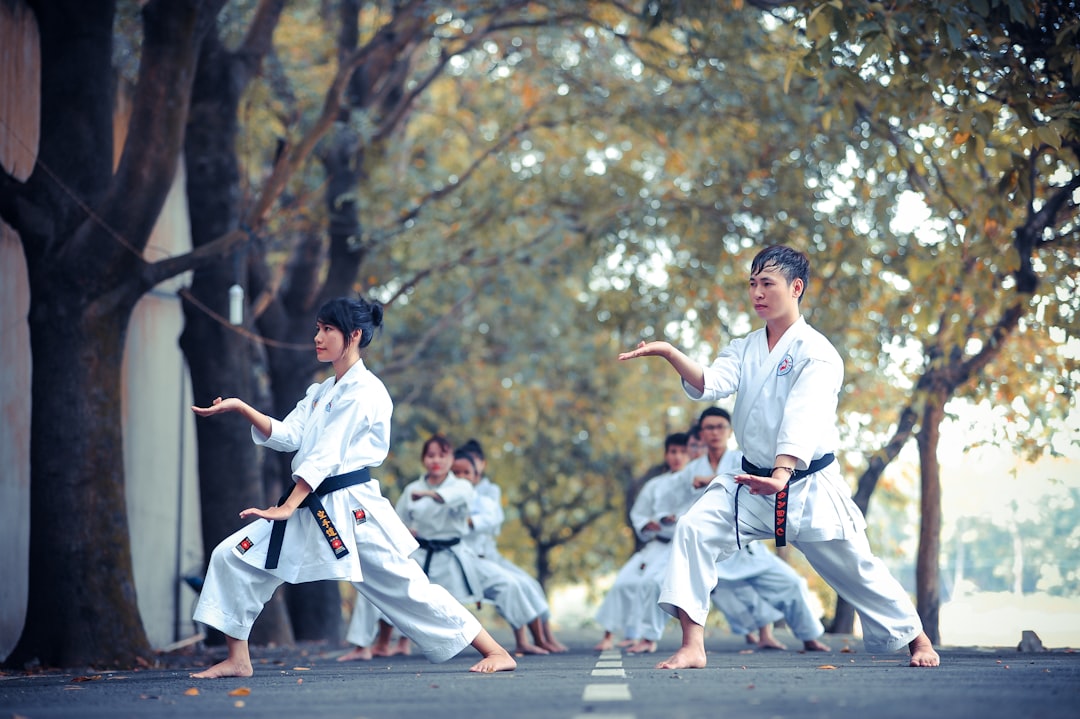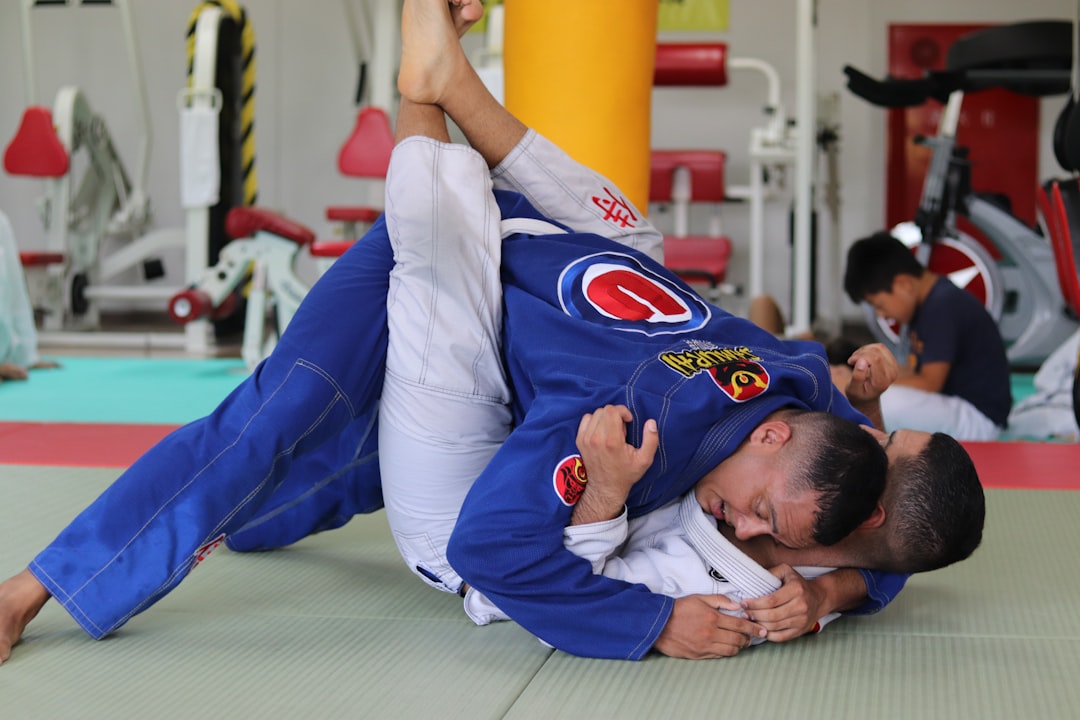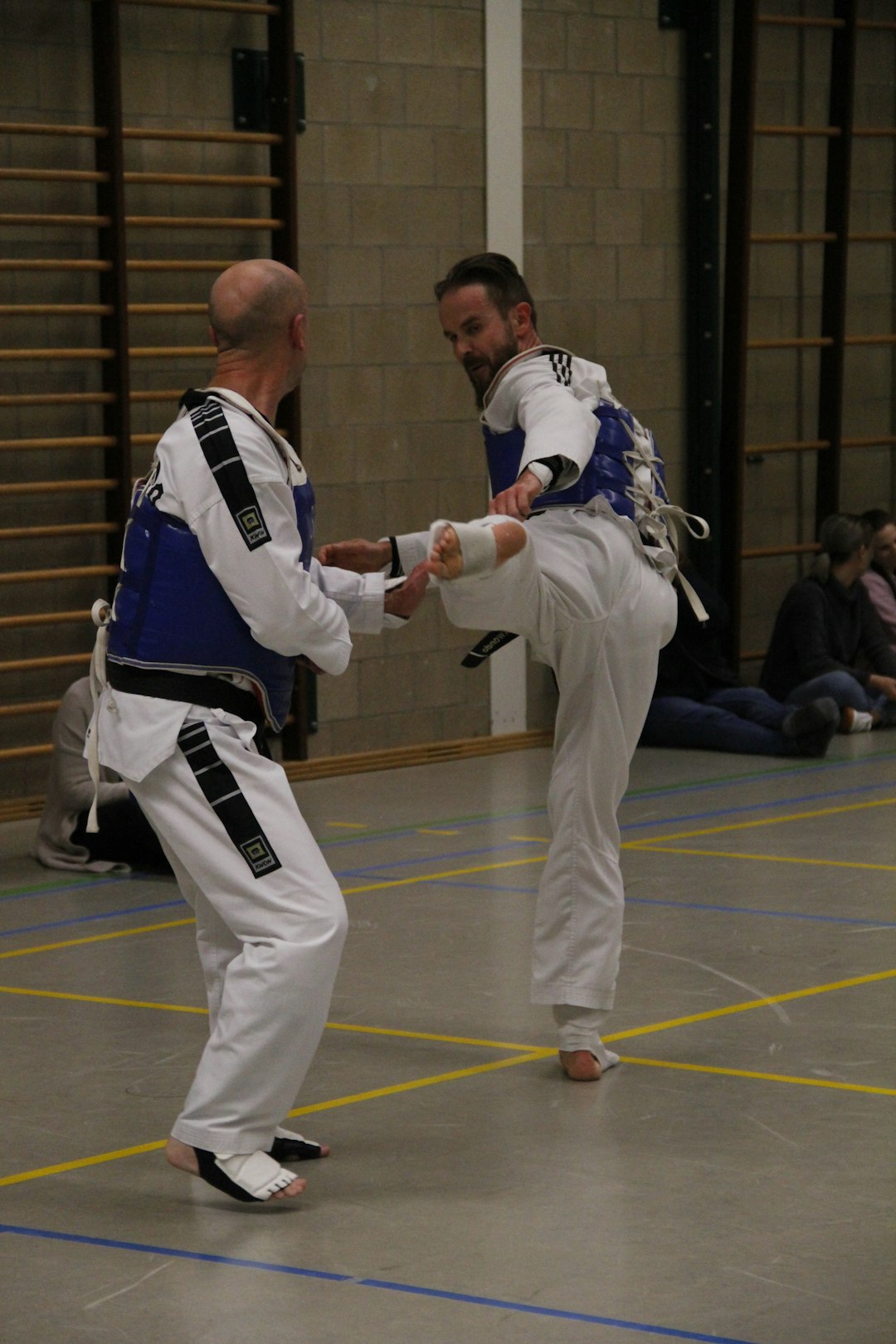The traditional karate uniform, or gi, is more than just clothing—it symbolizes dedication, discipline, and respect for the martial art. For those training karate at home, the gi provides warmth and aids mental focus, fostering discipline and camaraderie. Its design facilitates unrestricted movement essential for complex techniques while connecting practitioners globally to karate's ancient roots. When choosing a gi for home practice, consider material, fit, durability, and posture enhancement—a high-quality uniform promotes professionalism and caters to various karate styles, making it crucial for effective training sessions in the comfort of your home.
What’s in a Name? Exploring the Karate Uniform for Training at Home
Karate, an ancient martial art with roots in Japan, is renowned for its rigorous training and iconic attire. The karate uniform, or gi, plays a pivotal role in both the practice and history of this discipline. This article delves into the rich heritage of traditional karate uniforms, their symbolic components, and the practical benefits they offer when training at home. We’ll guide you through the process of choosing the right gear, from understanding essential parts to locating reliable sources for purchasing or renting a gi suitable for your home practice, ensuring an authentic and mindful karate experience.
- # What's in a Name? Exploring the Karate Uniform for Training at Home
- The Historical Significance of Karate Attire
- – A brief history of karate and its traditional uniforms.
- – Evolution of the uniform over time.
- Key Components of a Karate Gi (Uniform)
# What's in a Name? Exploring the Karate Uniform for Training at Home

The uniform worn by practitioners of karate is more than just a piece of fabric; it’s a symbol of dedication, discipline, and respect for the martial art itself. Often referred to as a gi, this traditional garment plays a significant role in training karateka, or karate practitioners, both inside and outside the dojo. When you think about it, the gi isn’t merely a uniform; it’s an extension of your body, designed to enhance your performance during training sessions at home.
For those who choose to train karate in the comfort of their homes, the gi becomes an indispensable tool. It provides not only warmth but also serves as a means to focus the mind and body on the art of karate. The act of putting on a gi can be a powerful mental cue, helping practitioners enter a state of mindfulness that’s essential for effective training. So, whether you’re practicing kata (forms) or sparring with an imaginary opponent, the gi becomes your constant companion, encouraging discipline and dedication in your home karate practice.
The Historical Significance of Karate Attire

The historical significance of Karate attire, or the karategi, is deeply rooted in the traditions and practices of martial arts. This traditional garb has evolved over centuries, reflecting changes in fighting styles and cultural influences. Worn by practitioners when they train karate at home or in a dojo (training hall), the karategi serves more than just aesthetic purposes—it embodies the values and discipline of Karate itself. The uniform’s design, including its open-collared jacket and loose pants, allows for ease of movement, crucial for effective self-defense techniques.
In addition to being functional, the karategi carries symbolic weight. The solid colors, often in stark contrast, signify purity and respect, encouraging wearers to approach training with a clear mind and humble spirit. This attire also fosters a sense of camaraderie among Karate practitioners, uniting them under a shared visual identity regardless of their backgrounds or ranks. When you train karate at home, wearing the karategi becomes more than just putting on clothes; it’s an act of commitment to the martial art and its principles.
– A brief history of karate and its traditional uniforms.

Karate, an ancient martial art originating from Japan, has evolved over centuries, spreading worldwide and gaining immense popularity. The art’s traditional attire, or uniform, has a rich history as well, designed to both protect practitioners during training and symbolize their commitment to the discipline.
The traditional karate uniform, known as a gi (衣), consists of lightweight cotton pants and a sleeveless shirt, often made from sturdy yet flexible material. This attire allows for unrestricted movement, crucial for the complex stances, strikes, and blocks that characterize karate training. The gi is worn by practitioners of all ages and skill levels, fostering a sense of unity within the karate community, regardless of their location—be it a train karate studio at home or a bustling dojo abroad. The uniform’s simplicity belies its significance, serving as a tangible link to karate’s roots and a symbol of respect, discipline, and dedication for those who choose to wear it.
– Evolution of the uniform over time.

The karate uniform, or gi, has undergone a remarkable evolution since its early beginnings in Japan. Its design and style have been influenced by traditional cultural practices and the sport’s growing global popularity. In the early 20th century, when karate began to spread beyond its Japanese roots, the uniform started to take on a more standardized form. Before this, various styles and materials were used, often reflecting regional differences in martial arts practice.
As karate gained recognition as an Olympic sport, the uniform further adapted to meet functional and aesthetic requirements. Today, the traditional gi is worn by practitioners worldwide for training, competitions, and demonstrations. It serves as a symbol of respect, discipline, and unity within the karate community, while also allowing freedom of movement essential for performing complex techniques during train karate at home or in structured classes.
Key Components of a Karate Gi (Uniform)

The Karate Gi, often simply referred to as a ‘karate uniform’, is an essential part of training karate at home or in a dojo. Its design and construction play a crucial role in enhancing performance, comfort, and safety during practice sessions. The primary components of a traditional karate gi include the dobori (sleeveless jacket), hakama (trousers), and often a belt called an obi. These elements work together to provide both structure and flexibility for practitioners, allowing them to move freely while offering protection during intense training.
When selecting a karate uniform, consider factors like material—typically cotton or a blend for breathability—and fit, ensuring it’s neither too tight nor baggy. The gi should be durable enough to withstand frequent washing and the rigors of training. For home practitioners, investing in a well-made gi is beneficial; it promotes proper posture, facilitates complex movements, and provides a sense of professionalism during solo or group practice sessions. What specific features do you look for when choosing a karate uniform for your home training? Should the design cater to different karate styles?
The traditional karate uniform, or gi, is an integral part of the martial arts experience, especially for those looking to train karate at home. Its evolution reflects the dynamic nature of karate itself, adapting over time while preserving historical roots. By understanding the significance and components of this attire, aspiring karate practitioners can fully immerse themselves in the discipline, whether practicing in a studio or training in their own homes. Embracing the gi is more than just wearing clothing; it’s a symbol of dedication, respect, and the spirit of karate.
